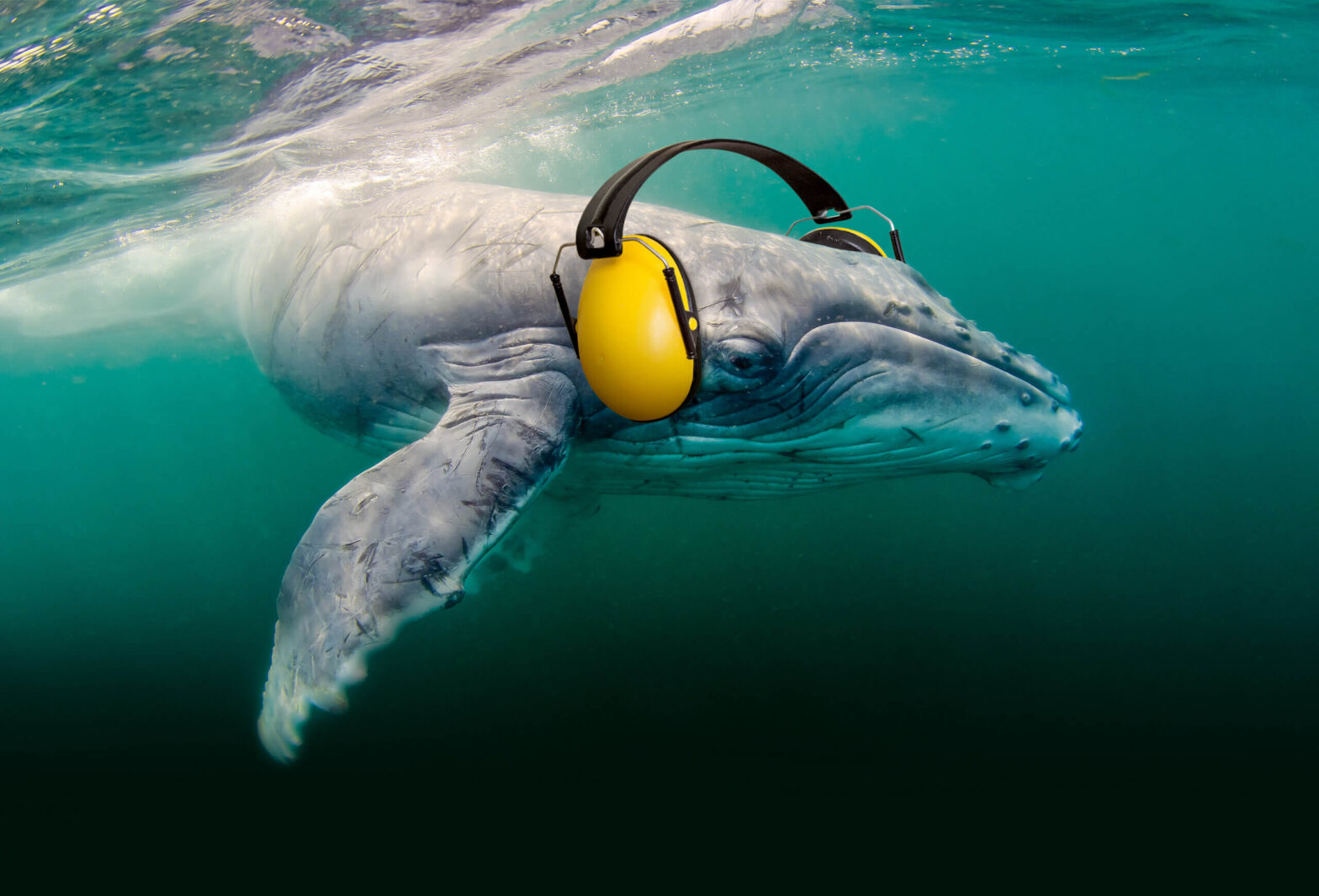Three industrial sectors have the tools to quieten the ocean
The Convention on Migratory Species (CMS), an environmental treaty of the United Nations, publishes a technical report to avoid, reduce and mitigate underwater noise pollution prepared by an OceanCare underwater noise expert.
Today, on World Oceans Day, the Convention on Migratory Species (CMS) released a Technical Report providing an overview about technologies and practices which reduce ocean noise emissions of activities by three industries: merchant shipping, the oil and gas industry when exploring for hydrocarbon resources, and the wind energy sector when constructing offshore windfarms. Author Dr. Lindy Weilgart, ocean noise expert at the international marine conservation organisation OceanCare and adjunct professor at Dalhousie University, Canada, has reviewed best practice examples which provide a convincing case that a significant reduction of noise emissions at source could be accomplished.
The concept of promoting the deployment of «best available technologies and best environmental practices» has been accepted and endorsed by governments from around the world for many years within numerous multilateral environmental agreements, including the Convention on Biological Diversity (CBD) and the Convention on Migratory Species (CMS), as well as regional agreements such as the UNEP Mediterranean Action Plan, the Agreement on the Conservation of Cetaceans in the Black Sea, the Mediterranean Sea and contiguous Atlantic Area (ACCOBAMS) and the Agreement on the Conservation of Small Cetaceans of the Baltic, North East Atlantic, Irish and North Seas (ASCOBANS).
«There is an abundance of evidence that underwater noise pollution is a problem for many marine species—there have been documented impacts on at least 150 species to date. Quieting technologies that reduce the noise at source will go furthest in reducing these impacts. Governments, such as Germany, that have set noise limits have spurred technological innovations for quieter alternatives,» says Dr. Lindy Weilgart.
Some of the recommendations in the CMS Report
Reducing noise emissions from shipping generally includes minimizing cavitation by various techniques such as better maintenance and optimizing the propeller design to the hull and to usual operating conditions, which often improves efficiency as well. Focusing quieting on the 10-15% of the noisiest container and cargo ships of the global fleet will go furthest in reducing overall shipping noise. The most effective operational measure which could be imposed immediately is slow steaming, as the reduction of vessel speed would result in reduced noise emissions as well as other environmental benefits. Specifically, current estimates show that 10% speed reductions across global fleet could cut shipping noise by 40%.
«Some quieting methods, like slowing ship speed, have additional benefits such as reducing the risk that whales get rammed by ships, and these should be especially encouraged.» says Dr. Lindy Weilgart.
Additionally, if a ship slows down, it uses less fuel and thus emits fewer greenhouse gas emissions and air pollutants. Taking into account all factors, such as weather conditions, and, at a fleet level, additional ships that may be necessary to provide the same transport service when a speed reduction is being applied, in general analysis conclude that the baseline CO2 emissions could be reduced by around 13% and 24%, if the vessels reduced their speed by 10% and 20% respectively.
For seismic airgun surveys, quieting technologies, such as Marine Vibroseis (MV), that could replace airguns are most promising, as much of the energy (the mid or high frequencies) emitted by airguns is wasted and unused. A controlled sound source, like Marine Vibroseis, tailor-made to the specific environmental conditions and without the damaging sharp rise time of airguns would also likely be more environmentally friendly towards marine life. MV has been in development since 2008 and yet little progress is evident until now.
In stark contrast to the fossil fuel industry, the renewable energy sector demonstrates that many new quieting technologies can be applied, such as alternative low-noise concepts have been developed for pile driving. This trend has been stimulated by mandatory measures set by governments, such as Germany, imposing noise thresholds and therefore setting an action-forcing standard for innovation and investments.
«Using what is out there and learning from best practice experiences in different regions should be state of the art and common sense, but sadly it isn’t. The good news: examples show that innovation and investment in less harmful technologies can be stimulated for example when governments impose requirements to reduce negative impacts on species,» comments Nicolas Entrup, Director International Relations at OceanCare, on why such a report is invaluable.
While the report addresses technologies that would reduce noise emissions of seismic surveys when searching for new hydrocarbon resources, OceanCare recalls that we need to go beyond such technologies. «In a context of increasingly pressing climate emergency, the best environmental practice in the field of fossil fuels is to keep them in the ground. No new oil and natural gas fields are needed in the net zero pathway, as the International Energy Agency (IEA) established in its Net Zero by 2050 report,» says Carlos Bravo, Ocean Policy expert at OceanCare.
